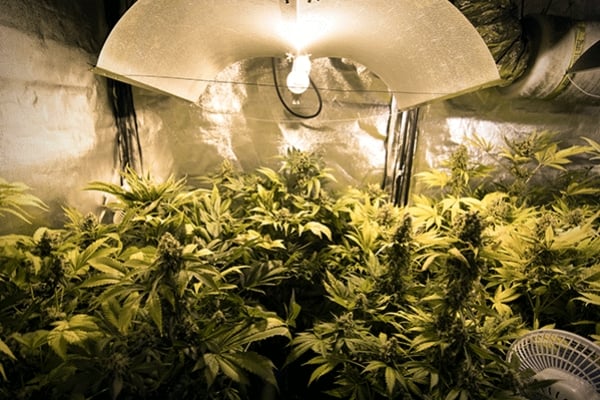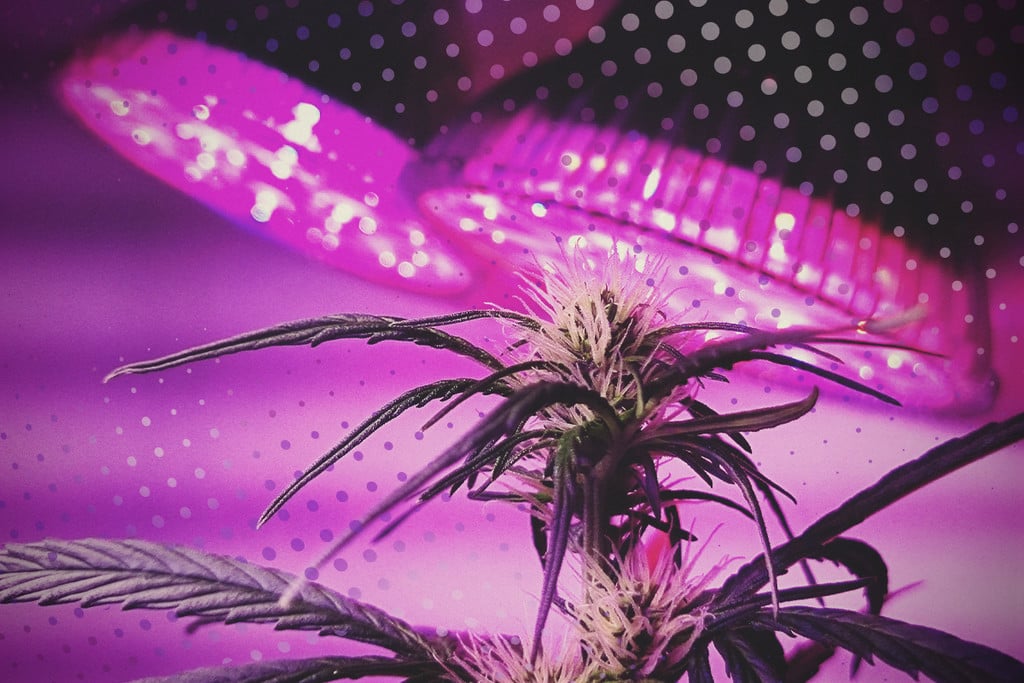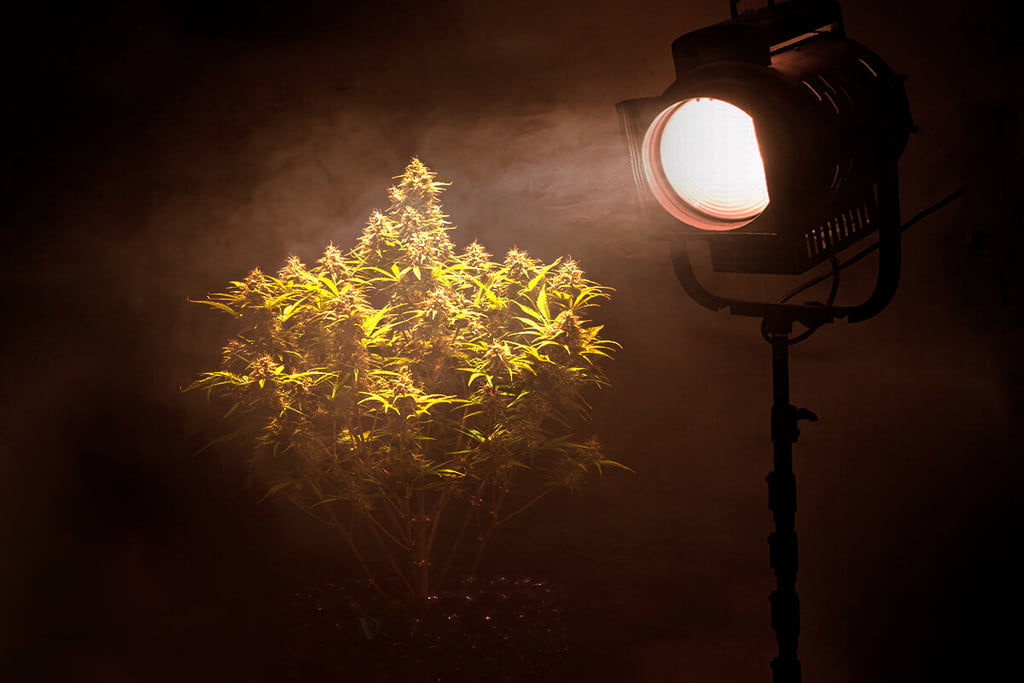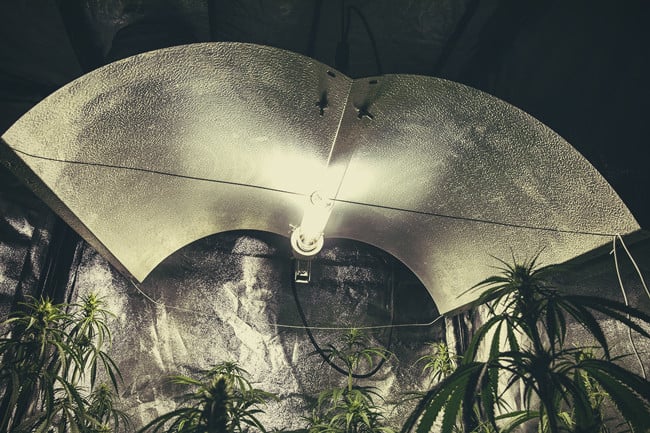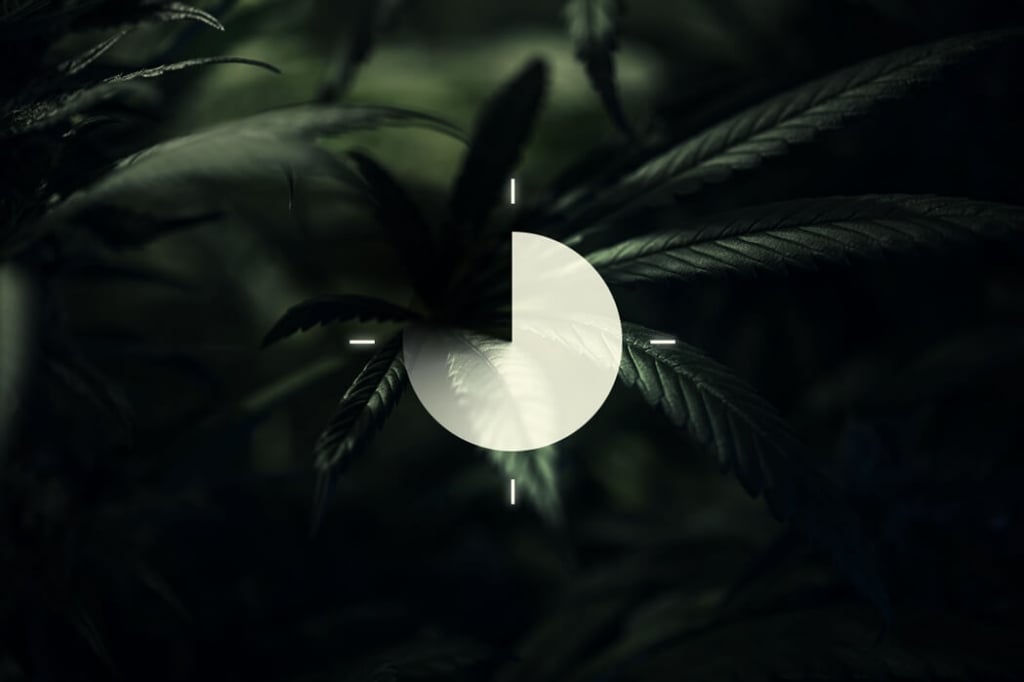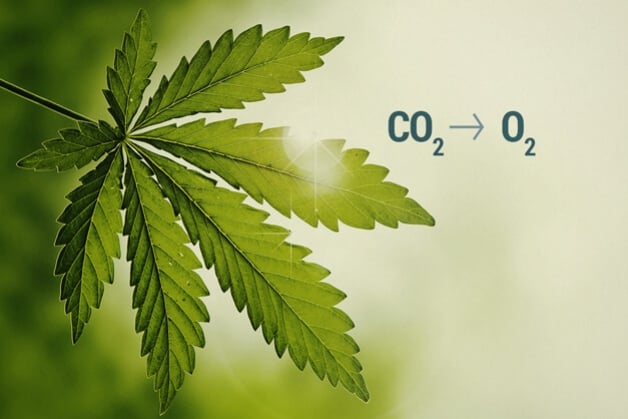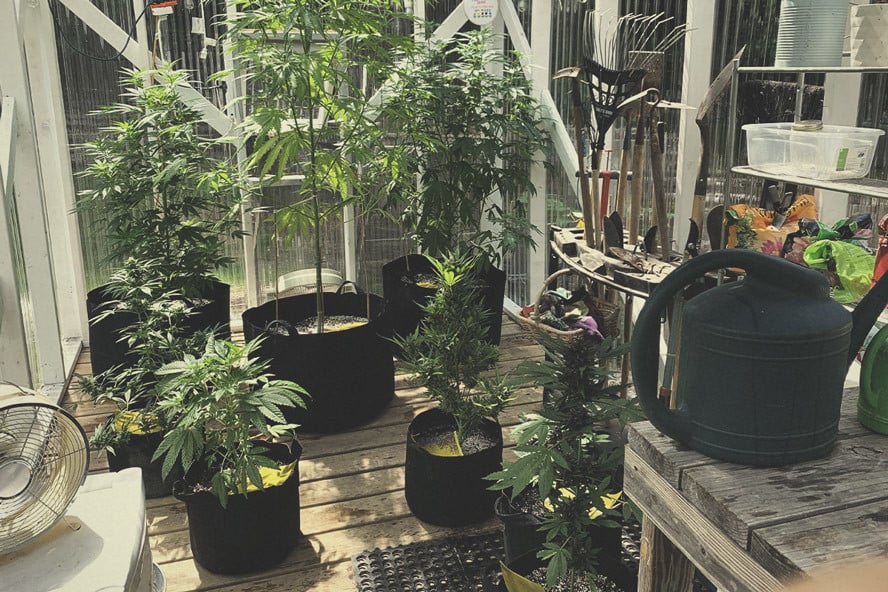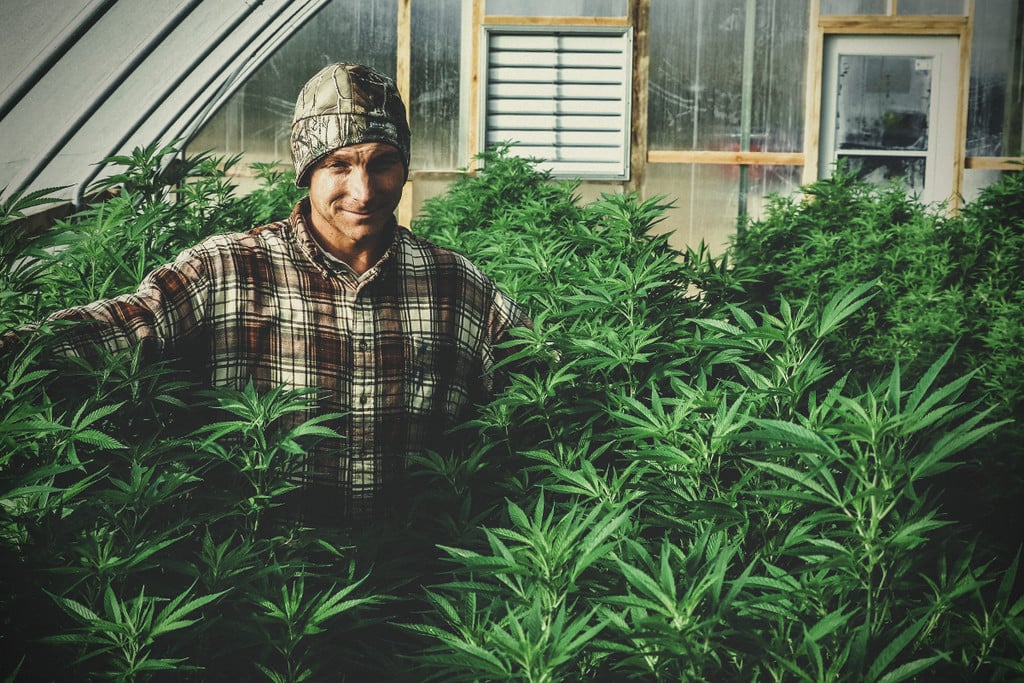.
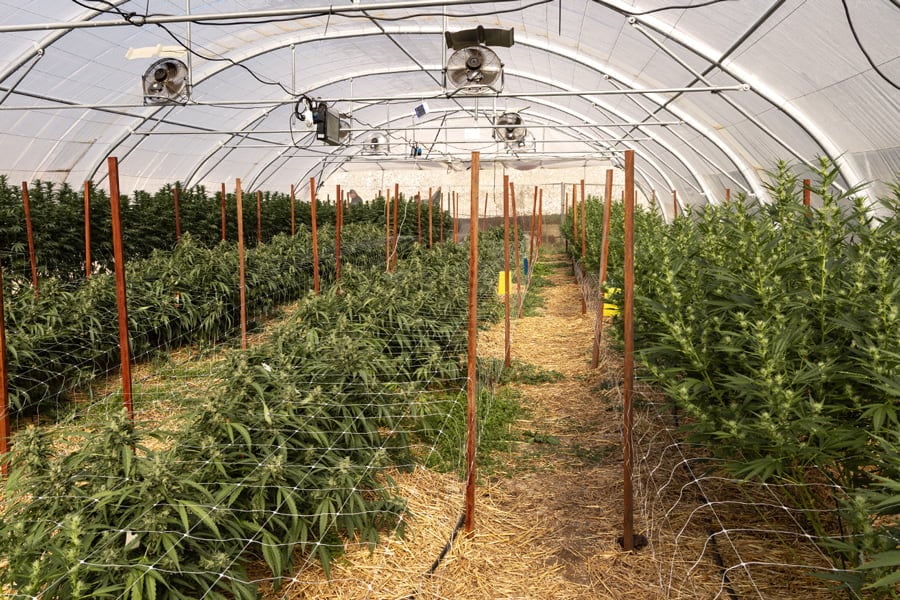
A Guide to Supplemental Greenhouse Lighting
Using supplemental lighting can help you get the most out of growing weed in a greenhouse. Whether it's to provide extra illumination during those cloudy days, or you want to grow well into the winter, many growers can benefit from it. Read on to learn the ins and outs of supplemental lighting.
Cultivating weed in a greenhouse gives growers the best of both worlds: the power of the sun, and the ability to control the environment. What’s more, we can even use additional lighting to extend the growing season and get more from our plants. Understanding the role and techniques of supplemental lighting is crucial for enhancing yields and ensuring plant health.
This article explains how and why to use additional lighting, especially for growers in regions with less favourable climates.
Contents:
- The need for supplemental lighting in greenhouses
- Benefits of supplemental greenhouse lighting
- Understanding cannabis light requirements
- How to calculate the need for supplemental lighting for weed
- Types of supplemental lighting
- Common mistakes in supplemental lighting
- Supplemental greenhouse lighting: is it worth it?
The Need for Supplemental Lighting in Greenhouses
Depending on where you live and what you want from your grow, you don’t necessarily need supplemental lighting. But it gives growers much more freedom and control. Below, we look at why you might choose to use an additional source of light.
-
Extending the Vegetative Phase for Cannabis
The vegetative phase is a critical period in which cannabis plants develop their structural integrity and foliage density, eventually preparing for fruitful flowering and a more bountiful harvest. Without a healthy vegetative phase, a good flowering phase is not possible.
Supplemental lighting serves as a boost during the veg stage, providing the additional illumination needed to stimulate prolonged vegetative growth, especially when the days shorten outdoors, which would normally induce flowering in photoperiod plants. A longer veg time also opens the door to using more intensive training methods that necessitate a longer period of plant recovery.
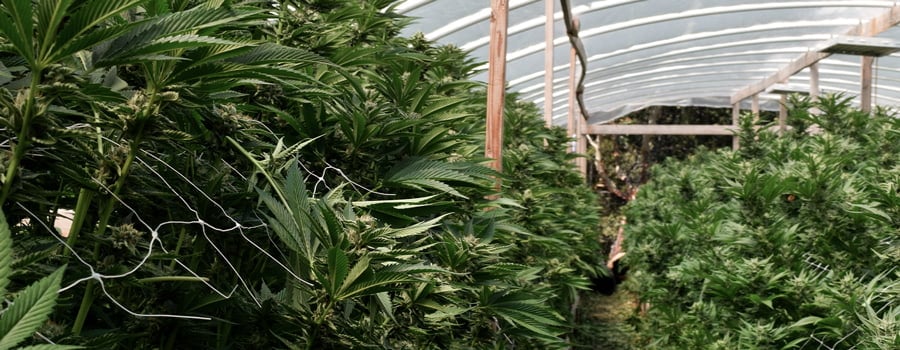
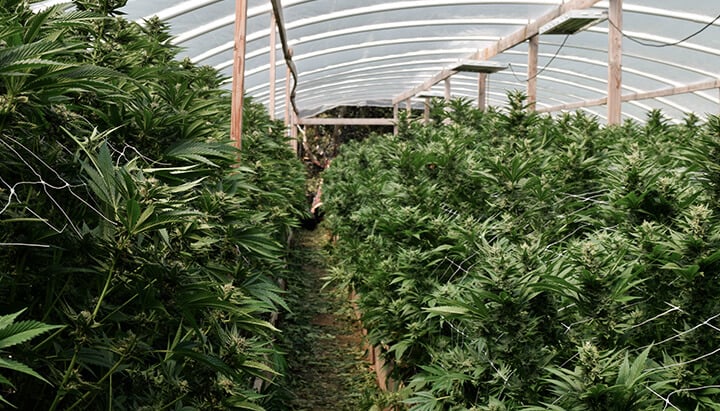
-
Cultivation in Shaded Areas
One of the inherent challenges of growing under the sun is the uneven distribution of natural sunlight, which can create shaded zones where light penetration is insufficient for optimal growth. These micro-environments within the grow can significantly hinder plant development, leading to stunted growth or, more likely, reduced productivity.
Supplemental lighting can be a potential solution, ensuring that light reaches all plants uniformly, regardless of their position in the greenhouse. By integrating additional light sources, such as side lighting as well as overhead lighting, growers can mitigate the drawbacks of natural light variability, ensuring that plants located in less exposed areas receive the necessary energy to thrive. This uniformity in light exposure guarantees that no plant is left behind, helping to ensure equal and uniform growth, and a fat harvest.
Perhaps even more importantly, if you end up with a cloudy summer and less sunlight than expected, then you can switch on the lights and stop your grow from being a disappointment.
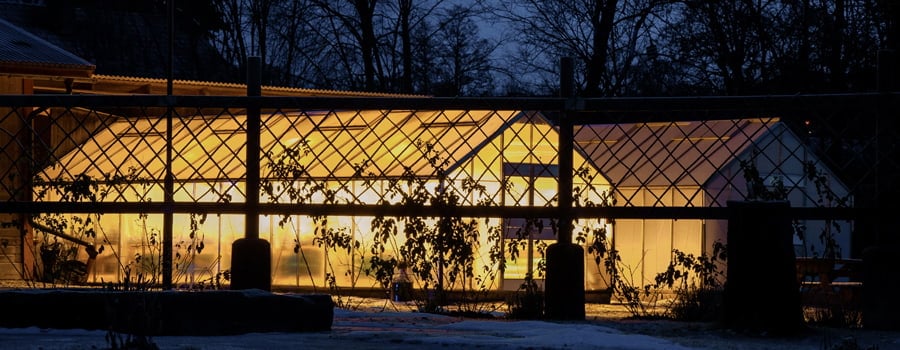
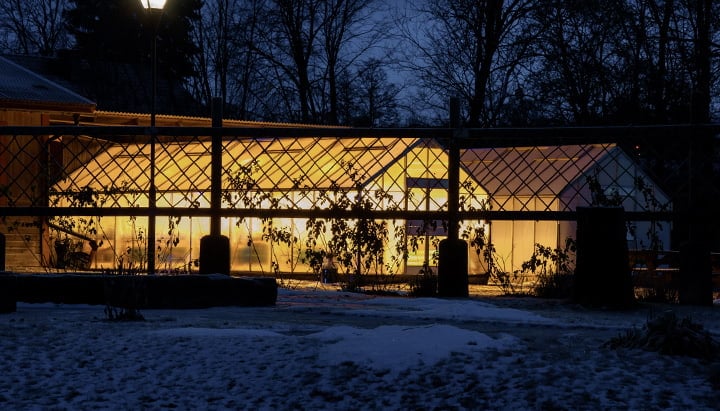
-
Enhanced Control Over Flowering
The flowering phase is when cannabis plants produce their valuable buds, and all your hard work starts to pay off. Supporting this stage as much as possible is crucial for optimising the quality and potency of the harvest.
Supplemental lighting offers growers more control over the flowering cycle, enabling the manipulation of light schedules to trigger and maintain flowering at optimal times. This control is particularly beneficial for strains that require precise lighting conditions to flourish, such as sativas that evolved in the tropics.
By adjusting the intensity and duration of light exposure, cultivators can influence the timing and development of the flowering phase, enhancing the production of cannabinoids and terpenes, leading to tastier and more potent buds.
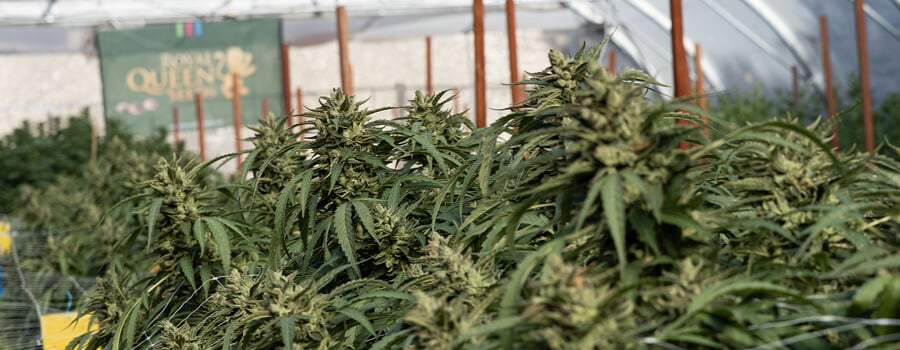
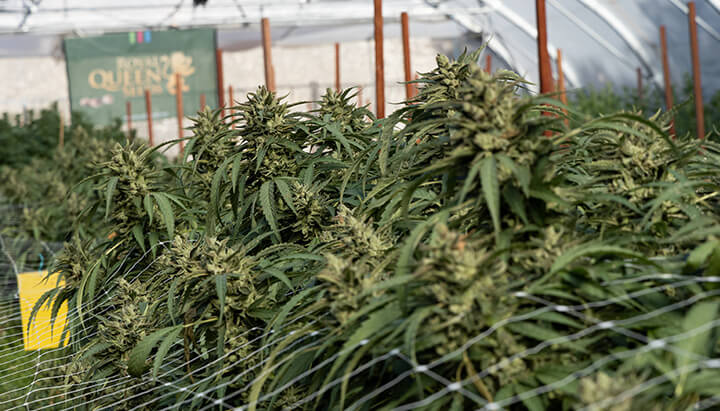
Benefits of Supplemental Greenhouse Lighting
The integration of supplemental lighting within a greenhouse unlocks a range of advantages that increase the chances of a successful grow-op. Below, we’ll take a look at some of the potential benefits.
-
Increased Yields
Bountiful yields are the ultimate goal of most cultivation efforts, and additional lighting can help in achieving this. By offering a stable and controllable light source, it removes the reliance on the unpredictable nature of sunlight (too often obscured by clouds, alas), thereby ensuring that cannabis plants receive an optimal light regimen throughout their entire life cycle.
-
Improved Plant Health
Vigorous, healthy plants obviously result in a more successful harvest. Supplemental lighting not only supports but significantly bolsters plant health by providing the light spectrum needed to support essential physiological processes.
These processes include photosynthesis, which is central to plant growth and health, and photomorphogenesis, which influences how plants grow and develop in response to light. Ever noticed how leaves turn towards the light source? This is photomorphogenesis. By tailoring the light spectrum and intensity to the plants' specific needs at different growth stages, growers can promote stronger, healthier plants that are more resistant to pests, diseases, and environmental stress.
-
Accelerated Growth
The path to harvest can be a long journey of anticipation and precision—and quite some nervousness too! Using supplemental lighting can hasten the growth cycle of cannabis plants, but only to a degree.
This acceleration is achieved by optimising the photosynthetic process, allowing plants to convert light into energy more efficiently and grow at an enhanced rate. This means that growers can achieve faster vegetative growth, a faster transition to the flowering stage, and ultimately, a reduced time to harvest.
It must be noted, though, that supplemental lighting can’t work miracles. You can reduce grow time, but it’s not going to change your life.
-
Mitigating Risks From Poor Weather
Greenhouse cultivation, while providing a controlled environment, still faces challenges from external weather conditions; namely, a lack of sunlight. Adding lighting can act as a safeguard against these unpredictable elements, offering a consistent and reliable source that counteracts the detrimental effects of insufficient sunlight due to overcast conditions, short days in winter, or other climatic fluctuations.
Understanding Cannabis Light Requirements
Expert cannabis cultivation requires a nuanced and detailed understanding of the plant's light requirements. Two key concepts are crucial to understanding what plants require from light: daily light integral (DLI) and photosynthetic photon flux density (PPFD). These metrics not only guide how we use supplemental lighting, but also ensure that such lighting is utilised in the most efficient manner possible.
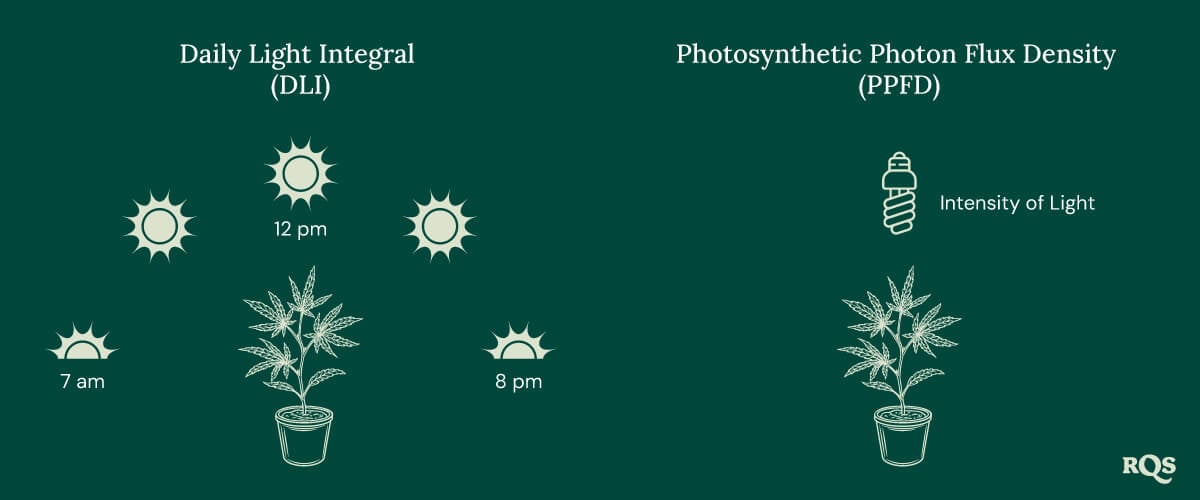
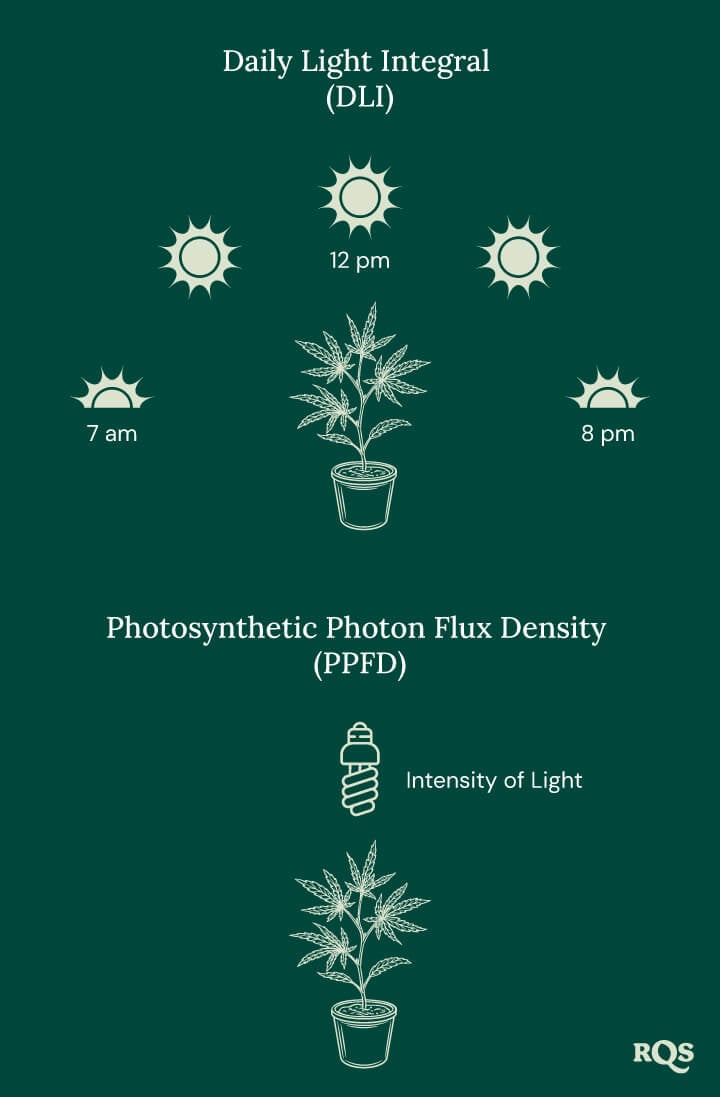
-
Daily Light Integral (DLI)
The daily light integral represents the total quantity of photosynthetically active radiation (PAR) that a plant receives over the course of a day, measured in moles of photons per square metre per day (mol/m²/day). This metric is very important when it comes to understanding the cumulative impact of light on plant growth.
DLI is not a one-size-fits-all parameter; rather, it varies according to the specific growth stage of the cannabis plant, with the vegetative stage requiring a different DLI range compared to the flowering stage. For instance, during the vegetative stage, cannabis plants thrive under a higher DLI, which promotes vigorous leaf growth and sturdy structural development. Conversely, during the flowering stage, while still requiring substantial light, the optimal DLI may vary to encourage optimal bud development and potency.
-
Photosynthetic Photon Flux Density (PPFD)
PPFD measures the intensity of light, specifically the amount of PAR, that actually reaches the plant surface per second, expressed in micromoles per square metre per second (µmol/m²/s). This metric is used to assess the quality of light that plants receive at any given moment and is particularly relevant when determining the effectiveness and placement of supplemental lighting sources, such as in a greenhouse.
The right PPFD levels ensure that cannabis plants can efficiently conduct photosynthesis. The optimal PPFD for cannabis varies through different stages of growth; young seedlings require lower levels of PPFD to prevent damage, while mature plants in the vegetative and flowering stages can handle, and indeed require, much higher levels if they are to produce large flowers.
Adjusting PPFD through supplemental lighting involves not just the intensity of the light source but also its distance from the plant canopy, as light intensity diminishes with distance.
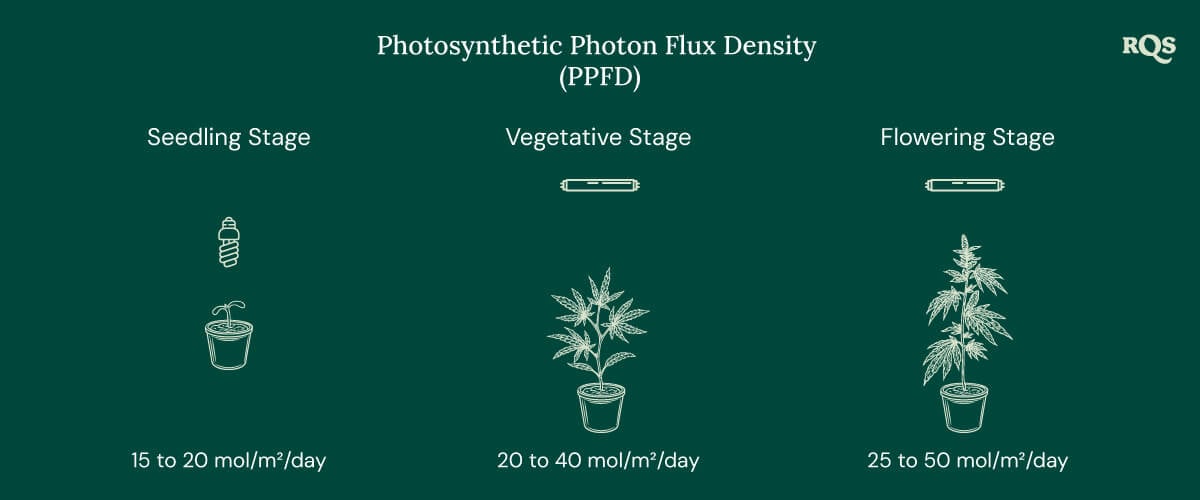
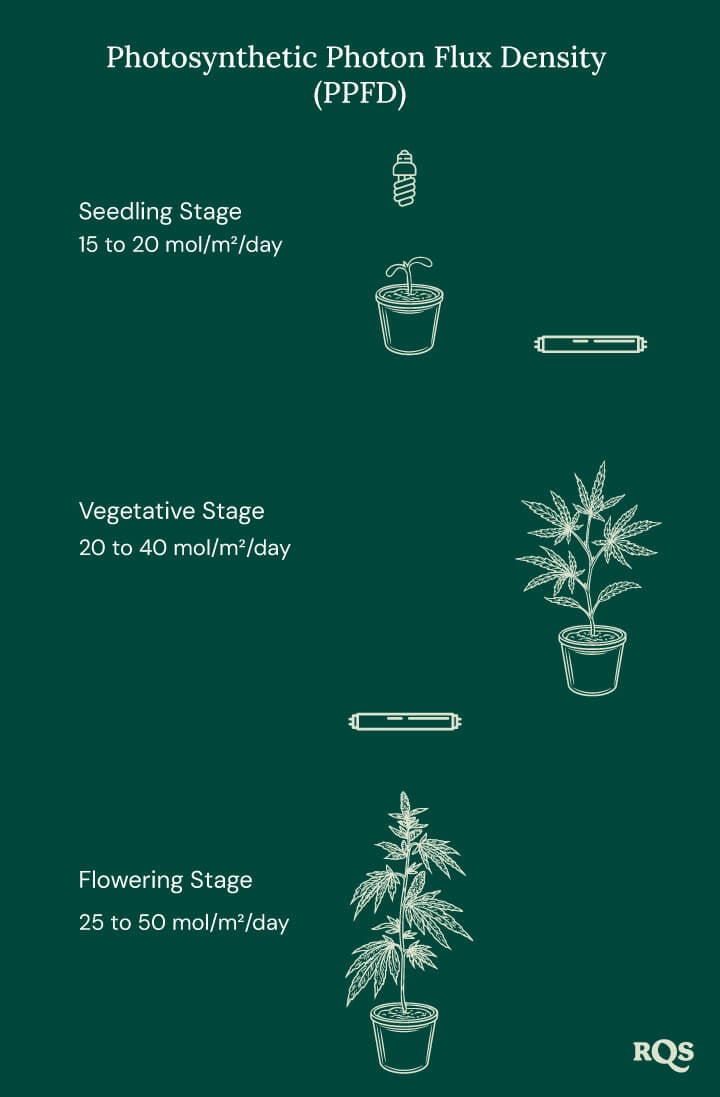
How to Calculate the Need for Supplemental Lighting for Weed
To use supplemental lighting properly and without waste, precise calculations are necessary. So, let’s take a look at what you need to know.
These calculations revolve around the two metrics outlined above.
-
Estimating DLI for Your Greenhouse
Estimating the DLI specific to a greenhouse environment involves assessing both the contribution of natural sunlight and that of supplemental light. Tools such as light meters or even DLI calculators, which take into account geographical location, greenhouse design, and the season, can assist in accurately gauging the existing DLI. But depending on your setup and motivation level, it might be overkill for your home grow.
You can also search the web to get an estimation for your local DLI. Once you have this number, you need to find out what you greenhouse's visible transmittance (VT) rating is. A VT rating tells you how much of the sunlight outside penetrates the greenhouse glass and actually gets to your plants. Once all factors are taken into account, including glass type, dirt and obstructions, and so on, most greenhouses will have a VT rating of around 50–65%, meaning your plants will only be receiving about half of the light available outside of the greenhouse.
If the measured DLI, once you've applied the VT rating, falls short of the plant's requirements, supplemental lighting can then be precisely adjusted to fill the deficit, ensuring that plants receive the ideal amount of light for vigorous growth and development.
-
Calculating PPFD Requirements
Some standard canopy DLI ranges for cannabis are:
- Seedling or clone stage: 15 to 20 mol/m²/day
- Vegetative stage: 20 to 40 mol/m²/day
- Flowering stage: 25 to 50 mol/m²/day
Calculating the required PPFD for cannabis involves understanding the specific light intensity needs of the plant at various stages of its life cycle, as listed above. By measuring the current PPFD levels within the greenhouse and comparing them to the optimal ranges for cannabis, growers can identify if additional lighting is necessary and, if so, can calibrate their supplemental lighting systems accordingly.
First, you'll need to know the DLI within your greenhouse. To get this number, either use a light meter as listed above, or calculate based on local DLI divided by the VT rating of your greenhouse. For instance:
- Your area gets a DLI of 30 mol/m²/day
- Your greenhouse VT rating is 50%
- The DLI within your greenhouse is 15 mol/m²/day
As you can see, this will be adequate for seedlings and clones, but not for any other growth stage. So you'll need to supplement. To do this, you'll need to covert the DLI within your greenhouse into PPFD, which you can do with an online calculator as it's quite a complex formula. Once you know what the PPFD rating is, and how much is lacking, you can select the right amount of artificial lighting to supplement with. Artificial lights come with PPFD ratings, so once you have your numbers it should be easy enough to select the right lights for your needs.
Types of Supplemental Lighting
The primary types of lighting used in modern cultivation—high-intensity discharge (HID) lights, light-emitting diodes (LEDs), and compact fluorescent lights (CFLs)—each come with their own set of advantages and considerations.
Any can be used for supplemental greenhouse lighting, and below we’ll take a look at the features of each.
-
High-Intensity Discharge (HID)
HID lighting is a tried and tested option in cannabis cultivation, known for its powerful light output and effectiveness in promoting vigorous plant growth. HIDs come in two main types: metal halide (MH), which produces a broad light spectrum ideal for the veg stage, and high pressure sodium (HPS), which is preferred during the flowering stage due to its warmer (more red) spectrum.
While HID lights are used for their penetration capabilities, they also generate significant heat, which can be a downside. This means growers need to implement cooling systems or have adequate ventilation within the greenhouse to prevent heat stress in plants. Additionally, their energy consumption is higher than newer technologies, such as LEDs, making them less energy-efficient over the long term.
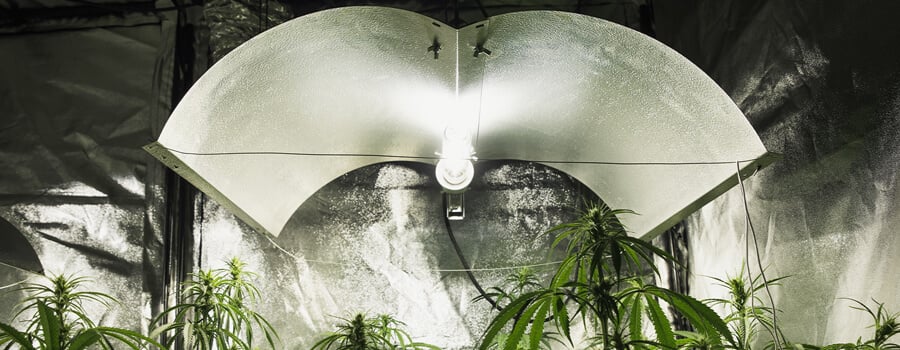
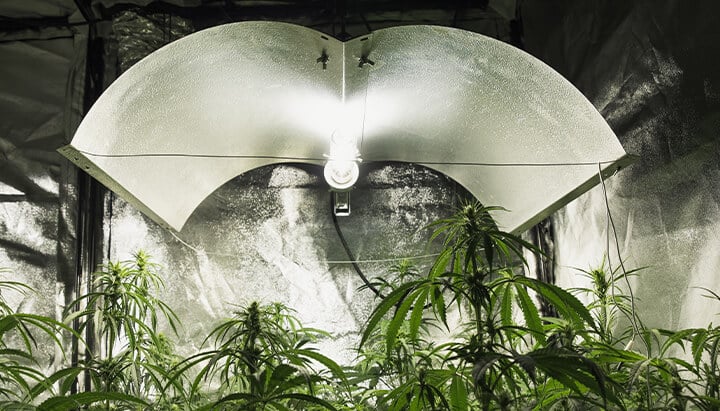
-
Light-Emitting Diode (LED)
LED technology has rapidly evolved to become a favourite in cannabis cultivation, thanks to its energy efficiency and the ability to tailor light spectra to specific plant growth stages. Many LED lights have bloom and veg settings for this specific purpose.
The major advantages of LEDs include their long lifespan, reduced energy consumption, and minimal heat output, which reduces the need for cooling systems.
Despite their higher initial cost, the long-term savings in energy and the potential for a better-quality crop make LEDs an increasingly popular choice among cannabis cultivators.
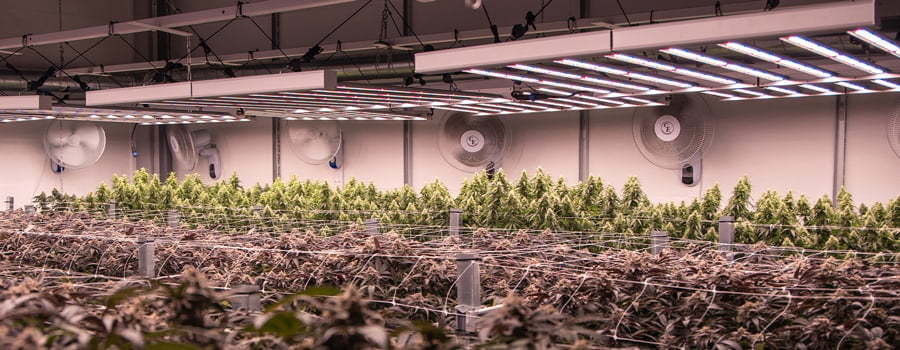
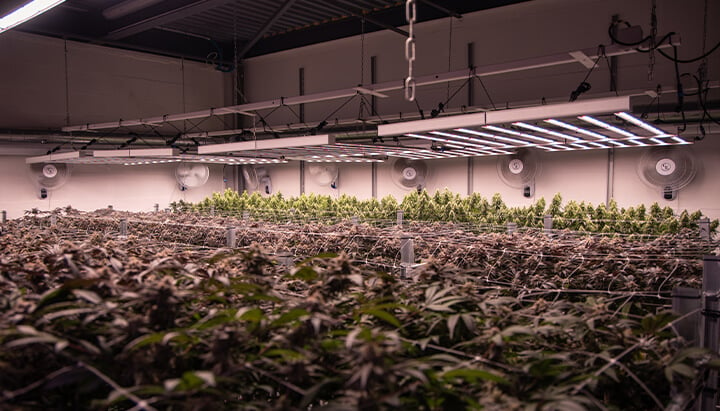
-
Compact Fluorescent Lights (CFLs)
CFLs provide a budget-friendly lighting option for smaller-scale operations or for use during specific stages of plant growth, such as the seedling or early vegetative stages.
CFLs are great because of their lower initial cost, ease of installation, and versatility, as they can be placed close to plants without the risk of heat damage. However, their light penetration is relatively weak compared to HID and LED options, making them less effective for larger plants or for use as the sole light source during later stages of growth.
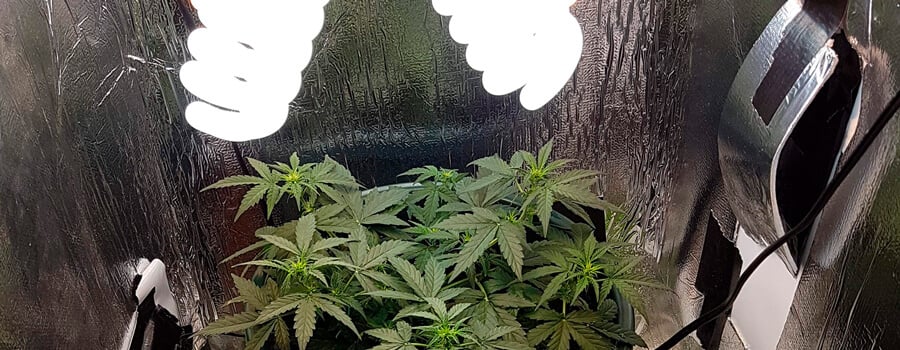
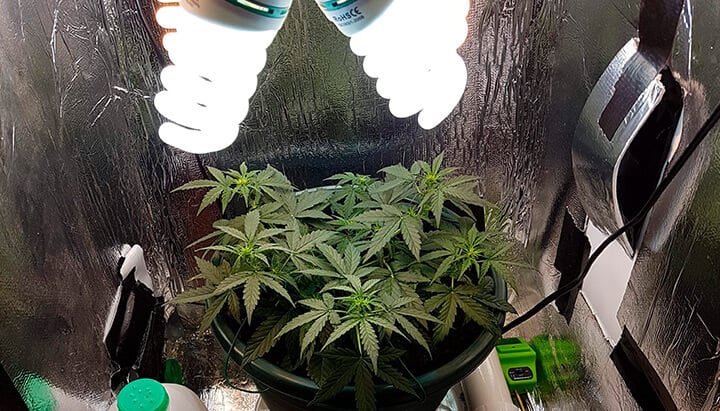
Common Mistakes in Supplemental Lighting
Understanding the common mistakes associated with supplemental lighting can help growers make more informed decisions, ensuring the effectiveness of their lighting setup and the quality and quantity of their harvest.
-
Incorrect Calculations
Inaccuracies in these calculations can lead to suboptimal lighting conditions, which might either deprive plants of necessary light or expose them to excessive intensity.
Under-lighting can stunt plant growth and affect yield quality, while over-lighting can lead to resource wastage and potentially harm plants. Ensuring accuracy in these calculations requires an understanding of the plant’s requirements regarding light at various growth stages, and the use of reliable measurement tools to assess actual light levels within the greenhouse.
-
Inadequate Coverage
The arrangement and distribution of supplemental lighting plays a critical role in ensuring properly uniform light exposure across the entire plant canopy. Inadequate coverage can result in uneven growth, where some plants receive optimal light while others languish in shadowed areas.
To avoid this issue, lighting systems should be designed and positioned to ensure even distribution of light, taking into account the specific layout of the greenhouse and the height and density of the plant canopy. Regular adjustments may also be necessary as plants grow and the canopy thickens, to maintain optimal light penetration to lower leaves that will inevitably become overshadowed as time progresses.
-
Lack of Automation
The nature of cannabis growth necessitates adaptable lighting regimes that can change with each stage of development. Manual management of lighting schedules can be labour-intensive and prone to human error, leading to inconsistent light exposure that can affect plant growth and flowering cycles.
Automating light cycles with timers and programmable control systems can vastly improve efficiency and plant health, although it does add extra cost. What’s more, automation may not always be helpful if you’re using supplemental lighting in response to unpredictable weather.
Supplemental Greenhouse Lighting: Is It Worth It?
While not every cannabis greenhouse will require supplemental lighting, for those in less ideal climates or seeking to maximise their yield and crop quality, it can be a helpful investment. This guide outlines the essential considerations, from light requirements to choosing the right equipment, ensuring that your supplemental lighting efforts are as productive as possible and your yields as big as possible.
Supplemental lighting is, by nature, responsive, and so you'll have to figure out the exact setup for yourself. However, the above guide contains the necessary information to make more educated decisions.


























